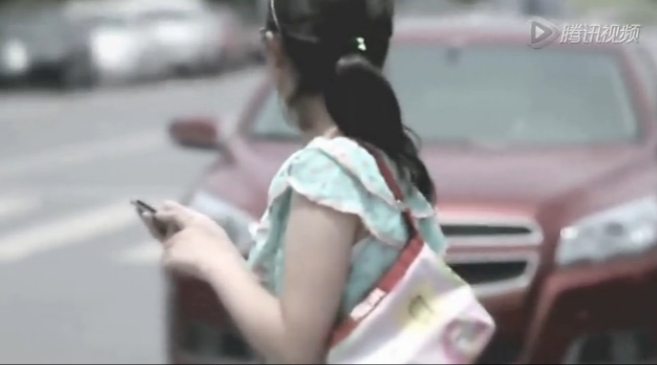
By Shawn Hamilton
Lately I’ve encountered a surprising number of people in public who seemed to be talking to themselves. Often when this happens, I assume these folks are talking to me, so I respond in some way as polite custom dictates, only to be ignored–or to receive a disapproving glance for having invaded someone’s privacy bubble. Usually by this point I would realize the person was talking on a cell phone or similar electronic device, and I would feel like a fool.
I first apprehended the potentially adverse social consequences of personal electronic devices in, appropriately, 1984. I was attending Humboldt State University, and I noticed a classmate wearing Walkman headphones day after day and commented in class that he seemed to be using them to tune the rest of us out. For me this was the beginning of what I now see as a deleterious trend that is getting so much worse than I initially anticipated.
In the 1990s I boarded a train in Taiwan and got a preview of the cell phone madness that would soon afflict the States. Bizarre sounds began to erupt all over the car—ringing, buzzing, beeping, Beethoven. These noises would happen, and there would be several people engaging in solo conversation, often in loud and sometimes angry voices. Acknowledging cultural relativity, I unsuccessfully resisted the feeling that imposing one’s personal conversation on others is a bit churlish.
Within a year after my return from Taiwan, these gadgets began showing up in California, and soon they were everywhere. I started teaching at a high school near Sacramento in 1999, and back then school officials still fantasized that they could control cell phone use. The administration at the school where I taught prohibited students from having their phones out and would confiscate them. On this particular campus cell phones had been used by gang members to stir up blue/red rivalries and organize brawls (as do other demographics). It was a sensitive issue. Parents at this school and all over the state complained, however, demanding convenient contact with their kids, so schools eventually caved, and now the devices’ presence on campuses is ubiquitous. The damage to students’ educations is already apparent. In my last ten years of teaching I have seen students’ attention spans steadily decline as their interest, presence and focus are increasingly lured from the “real” world of physical human interaction to the strange new dimension called “cyberspace”.
The problem is not only evident on high school campuses. I was teaching classes of primarily first-year international students on the U.C. Davis campus, and the problem there seemed worse. I passed a bus enclosure near the campus one day and saw five people, presumably students, all perched like birds on a wire, uniformly staring at a fixed point near their knees as they cradled their cherished screens.
The influence of these devices is showing up in formal essays too. College students are now unthinkingly inserting texting shorthand into their academic papers. A student, for example, might quote G.K. Chesterton writing, “I would maintain that thx are the highest form of thought.” When I asked students to explain, they invariably said they had done it unconsciously. I believed them. This isolated example may seem trivial, but it points to a larger pattern of communication decay. Communications are increasingly characterized by textual “soundbites”—fragments of ideas rather than more developed ones. Unfortunately, when one reads and writes in fragments and is exposed to fragmented images and messages in advertising through whatever medium, one also tends to think (or suspend thinking) in like manner. It’s contrary to the academic notion that one’s cognitive abilities can be developed, resulting in improved comprehension and communication.
Again I think of George Orwell, who imagined that Big Brother would impose the means of intrusive thought monitoring and control. He would be amazed to know that people would stand in long lines voluntarily in the freezing rain to buy such equipment at high prices, providing at their own expense the means of their own surveillance.
I would like parents to understand that teachers now are competing for students’ attention with electronic devices to which your kids are addicted. If “addicted” is too raw, substitute “compulsively habituated”. Only recently I saw an article on MSN called, “Are you addicted to your Smartphone?”, and the answer was pretty clear. If parents can’t recognize what’s happening, perhaps the inability stems from their own habitual reliance on the same devices, and “addiction” and “compulsion” really are appropriate terms. I’ve seen many students deprived of their devices by school officials, often eliciting reactions of agitation and panic. Responses are little different for adults, and a recently minted term expresses this pathological condition: “nomophobia,” which indicates a fear of being without a mobile device, or beyond mobile phone contact. It’s already affecting your families. Experts are arguing back and forth now about the existence or extent of device addictions, compulsive behaviors and related pathologies, but the observations I’m reporting, anecdotally, suggest that such addiction/compulsion is real and pervasive.
I’m sufficiently convinced by my observations to have acted on them. I had a cell phone for a short time in the 1990s when I was covering the California capitol, but it didn’t work very well. I couldn’t hear adequately to report outdoor rallies or protests to the news anchors, so I got rid of it.
Thereafter I saw companies continually rolling out product after product that the public swarmed to buy, and I realized that trying to keep up with the latest technology in terms of consumerism is a fool’s game, so I resolved to quit playing it. Most of these devices are just toys really–comforting diversions and distractions if we’re honest with ourselves. I acknowledge that some of these devices have utilitarian value, but that value is overrated, and considering the obsessive and unhealthy manner in which people generally are using these technologies, I suspect that their adverse effects far exceed the benefits.
We have only begun to learn about these devices’ ill effects on personal and public health along with a range of cognitive and social consequences. Change is not necessarily progress. We don’t need to accept every new technological fad that comes along, and the ones we do accept, we should approach with prudence and caution as we would any habituating influence. At the more extreme end of the spectrum, some people are becoming so enchanted with electronic gizmos that they are killing themselves (and others). The dangers and results of texting while driving are well known, but there are stranger cases of people dying after walking off of cliffs and into traffic while preoccupied with the objects of their obsession.
As I suggested previously, certain technology related trends appear in Asia well before they show up widely in the United States. The “into traffic” [Warning: Graphic Video] hyperlink leads to a clip that attests to what I fervently hope does not become a trend in the US or anywhere else. It’s graphic and disturbing, so I caution readers although it needs to be seen. I showed it to my son who will be driving soon. The roughly two-minute video was compiled from surveillance cameras in various Asian cities. It shows what can happen in the blink of an eye when one’s awareness and attention are hijacked by captivating electronic distractions.
–end

Enter a caption
It happens fast! The onlooker has l not had time to react.
Bio: Shawn Hamilton is a reporter and teacher in California. He began his teaching career in Taiwan in 1989 when large rallies were supporting the protesters at Tiananmen Square in Beijing, China.
He returned to the relative calm of the United States and took up a teaching position in Compton, a city near Los Angeles, in time for the rioting that occurred there, sparked by an unpopular court decision.
Hamilton moved to Sacramento where he taught classes part-time and covered the capitol as a reporter for Pacifica Radio’s KPFA in Berkeley. He received a Project Censored award in 2011 and writes poetry for fun.
As a teenager, Hamilton was introduced to Oswald “White Bear” Fredericks by his high school anthropology teacher, Henry Denny, and he became intrigued by traditional Native American cultures. The experience led to his traveling to Carlin, Nevada to stay a few days at the camp of Shoshone healer, John “Rolling Thunder” Pope. While attending Humboldt State University in California’s Redwoods a few years later, Hamilton took classes in Native American studies and began participating in sweat lodge ceremonies on the Eel River. The experiences, he said, altered the course of his life.
And it’s going to get worse! See http://www.npr.org/tags/294446075/oculus-rift.
If that link doesn’t work, just Google NPR Oculus. NPR has done a number of stories on it, but npr.org/tags/294446075/oculus-rift lists them all.
LikeLiked by 1 person
It looks like certain people are destined to let themselves descend completely into unreality.
LikeLike
Pingback: Danger in Cell Phone La La Land | Swill Bucket Delicacies